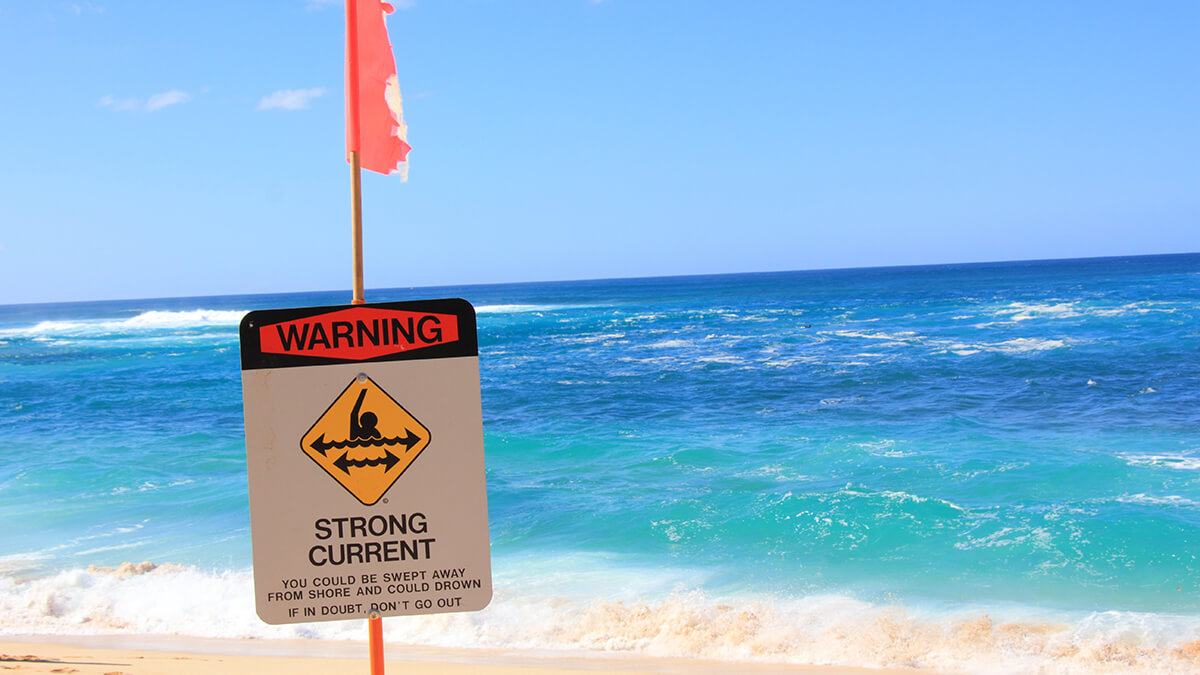
Rip Current Awareness Week — What you need to know Foremost Insurance Group
Vocabulary A rip current is a strong flow of water running from a beach back to the open ocean, sea, or lake. They can be more than 45 meters (150 feet) wide, but most are less than 9 meters (30 feet). They can move at 8 kilometers (5 miles) per hour. Rip currents are one of the most dangerous natural hazards in the world.
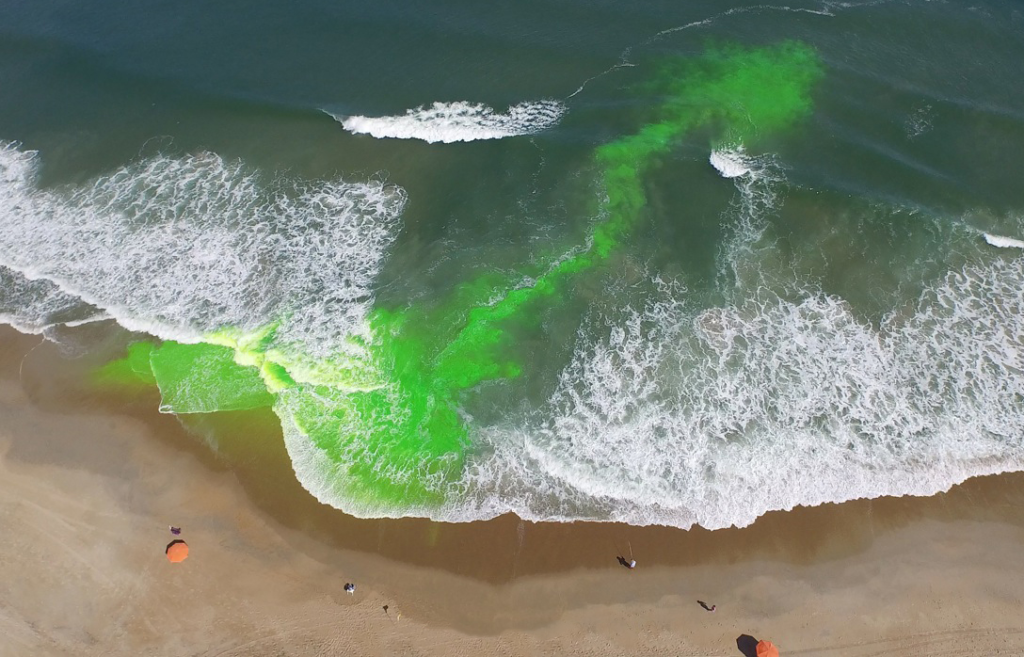
PSA Rip Currents Can Kill Homeless Voice
Rip currents are fast, concentrated flows of water that can form on beaches that have breaking waves. 1 Every beach is different, but rips generally form when waves are breaking and the underwater surface is uneven (e.g., if there are sandbars, piers, jetties, or groins along the beach). Worldwide, hundreds of people drown in rip currents each.

Rip Currents King Surf
Rip Current Monitoring System. Rip Currents - A Killer on the Beach. Rip Currents are powerful, channeled currents of water flowing away from shore. They typically extend from the shoreline, through the surf zone, and past the line of breaking waves. Rip currents generally form when waves approach normal to the shoreline or at a slight angle.

A Surfers' Guide To Understanding Rip Currents Surfers Hype
One type of rip, known as a bathymetric or channel rip current, forms when there are gaps between breaking waves. As waves break, they push water toward the beach and raise the level of the water.
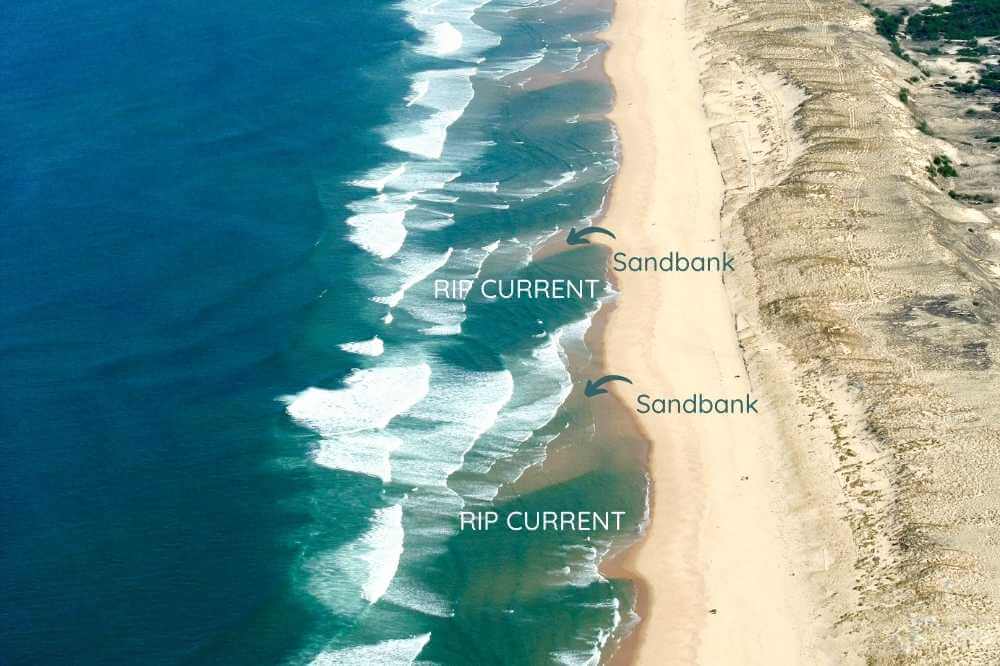
Riptide a maritime phenomenon to understand for a leisurely swim
A rip current is a narrow, fast-moving channel of water that starts near the beach and extends offshore through the line of breaking waves. If you do get caught in a rip current, the best thing you can do is stay calm. It's not going to pull you underwater, it's just going to pull you away from shore. Call and wave for help.
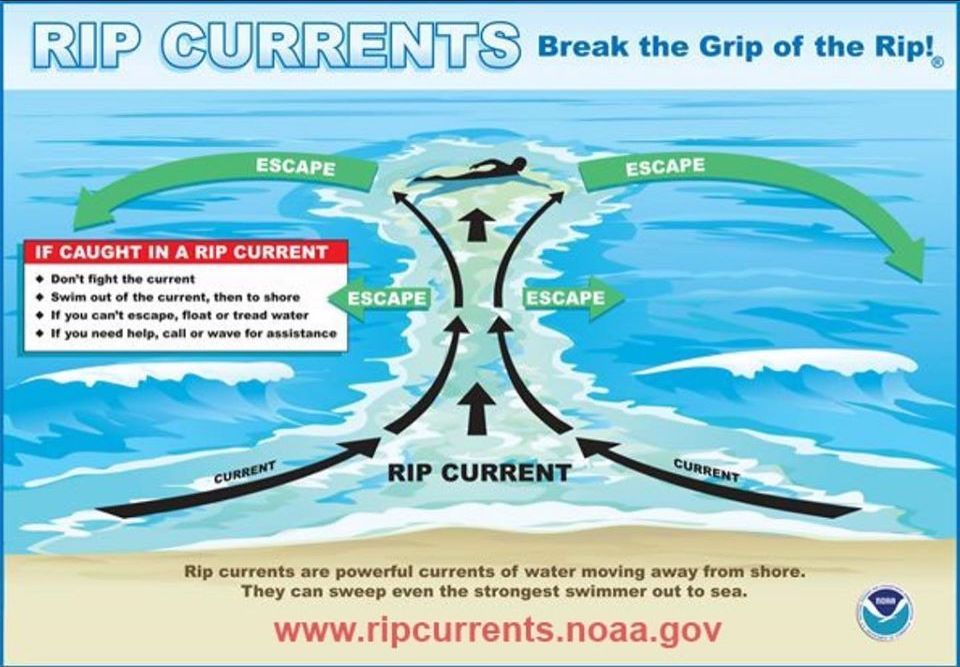
Rip Currents What You Should Know
Rip currents are channelized currents of water flowing away from shore at surf beaches. Rip currents typically form at breaks in sandbars, and also near structures such as jetties and piers. Rip currents are commonly found on all surf beaches, including Great Lakes beaches. Why are rip currents dangerous? Rip currents pull people away from shore.

4 safety tips for summer weather hazards National Oceanic and Atmospheric Administration
A rip current, is a narrow, powerful current of water running perpendicular to the beach, out into the ocean. These currents may extend 200 to 2,500 feet (61 to 762 m) lengthwise, but they are typically less than 30 feet (9 m) wide. Rip currents can move at a pretty good speed, often 5 miles per hour (8 kph) or faster. Rip Tides and Undertows

Rip currents are a major surf zone hazard Beaches.ie Beaches.ie
A channel of churning/choppy water that is distinct from surrounding water A difference in water color, such as an area of muddy-appearing water (which occurs from sediment and sand being carried away from the beach). A consistent area of foam or seaweed being carried through the surf.

Rip currents you've been warned Geological Digressions
Here we are going to explain what rip currents are and how to act if you are surprised by one. This is how rip currents are formed. The intensity of the waves and the topographic shape of the beach determine the formation of rip currents. They are currents that move perpendicular to the coastline in which the water flows from the shore towards.

How to Spot A Rip Current
If you try to fight the rip current and swim against it, you'll just get worn out. Instead - float! If you're a good swimmer, swim parallel to shore until you've cleared the pull of the rip current. Swim with the waves, allowing them to push you to shore. If you can, wave and yell to get the attention of lifeguards and people on shore to let.

Danger at the Beach Five Facts to Know about Rip Currents! IMA
Rip currents may have velocities as great as 1 metre per second (3.3 feet per second, or 2 knots) and extend offshore from 60 to 760 metres (200 to 2,500 feet). The energies of the currents may be sufficient to erode shallow channels through offshore bars, and the water may be discoloured by suspended sand. Swimmers caught in a rip current.
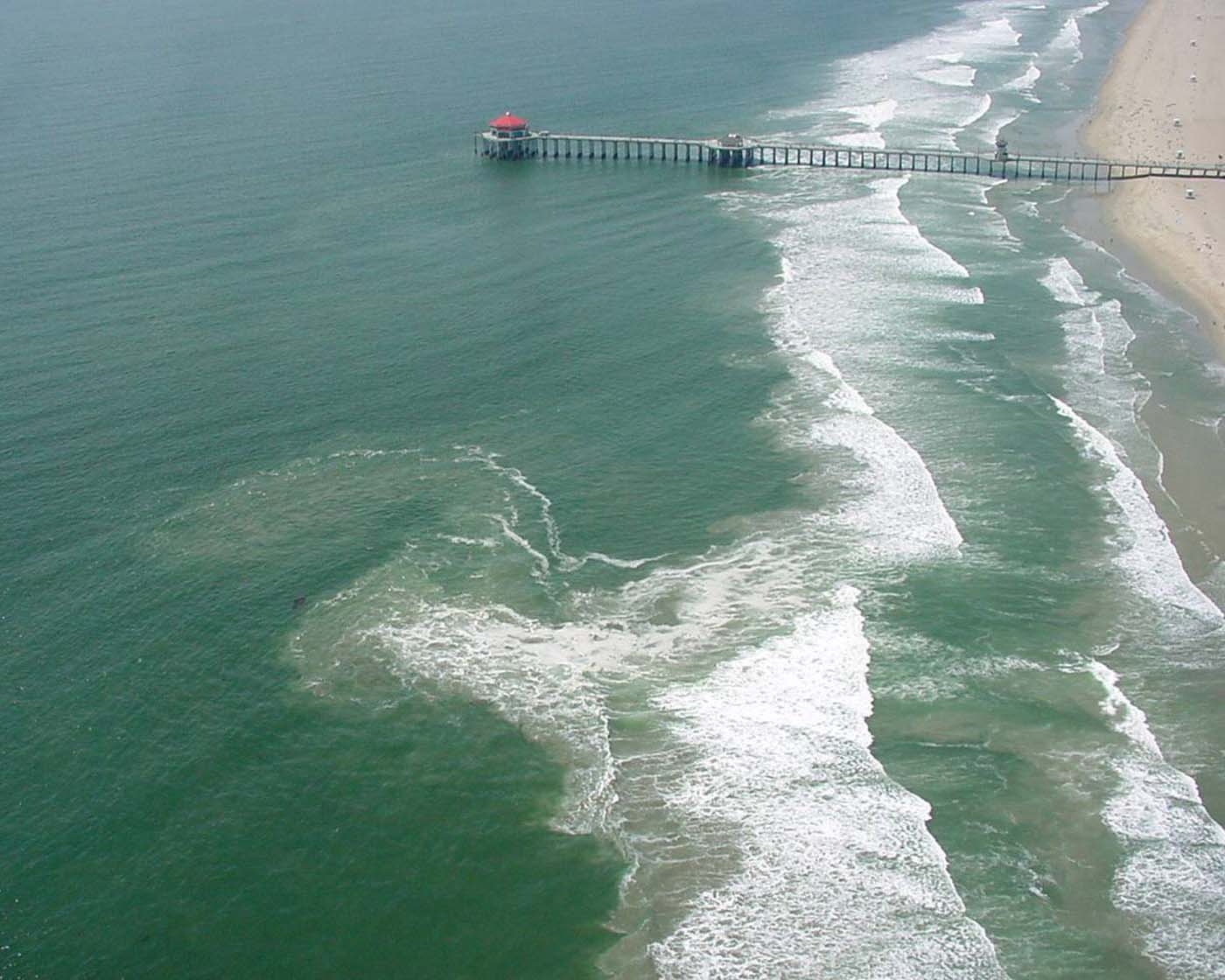
Rip Current Monitor
Rip currents are strong, narrow channels of fast-moving water that can pose a danger to swimmers and surfers alike. In this section, we will explore the formation and development of rip currents, as well as the different types of rip currents commonly encountered. Formation and Development
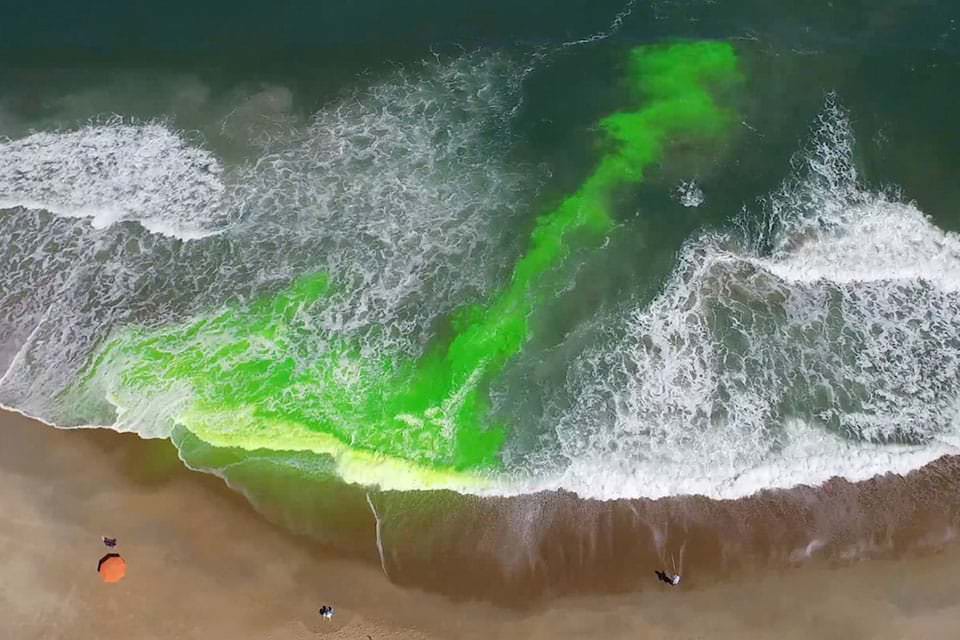
NOAA Launches First National Rip Current Forecast Model
For the first time, NOAA is launching a national rip current forecast model, aimed at saving lives of beach-goers around the country. This new model can predict the hourly probability of rip currents along U.S. beaches up to six days out. NOAA's National Ocean Service and National Weather Service collaboratively developed and implemented the.

Video of rip current Britannica
Rip current is named by Shepard and is present in almost all the seashores around the globe.Wind-stress pushes waves shoreward, and the water thus piled up moves alongshore till across-shore low stress allows it to return to the sea (Inman and Brush 1973; Smith and Largier 1995; Grant et al. 2005; Clarke et al. 2007; Reniers et al. 2009; MacMahan et al. 2010; Marchesiello et al. 2015).
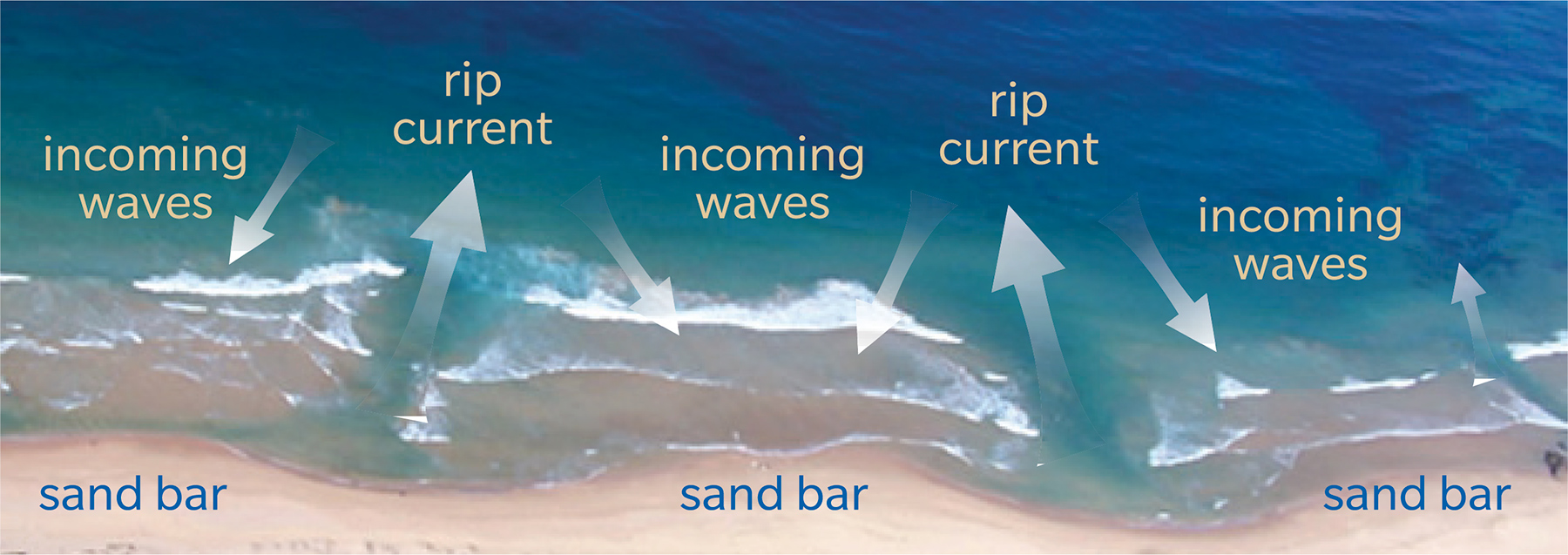
Rip Currents SLS Beachsafe
A rip current, sometimes incorrectly called a rip tide, is a localized current that flows away from the shoreline toward the ocean, perpendicular or at an acute angle to the shoreline. It usually breaks up not far from shore and is generally not more than 25 meters (80 feet) wide. Rip currents typically reach speeds of 1 to 2 feet per second.

What is a rip current and how can you spot a one at the beach?
Relax, rip currents don't pull you under. Don't swim against the current. You may be able to escape by swimming out of the current in a direction following the shoreline, or toward breaking waves, then at an angle toward the beach. You may be able to escape by floating or treading water if the current circulates back toward shore.